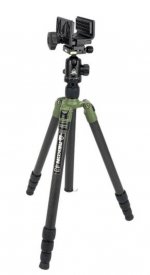IKnowNothing
Army.ca Veteran
- Reaction score
- 1,165
- Points
- 990
Assuming that B-GL-309-003/FP-001 is current, comparing against US/UK equivalents it seems like we're woefully undergunned on the AT side of the equation.
UK 2x NLAW per section (6x NLAW per platoon)
US Light - 2x AT4 per squad, 2x Javelin per platoon (6x AT4, 2x Javelin)
US Styker -2x AT4, 1x Javelin per squad (6x AT4, 3x Javelin)
Canada - 1x "Anti-Armour Weapon" per platoon (assuming Carl G currently?)
Even if the ATGM Replacement project pulled the trigger tomorrow to put a Javelin CLU in every platoon and 4-6 in the CS Company, the section remains naked and the platoon light overall

 www.battleorder.org
www.battleorder.org

 www.battleorder.org
www.battleorder.org

 www.battleorder.org
www.battleorder.org
UK 2x NLAW per section (6x NLAW per platoon)
US Light - 2x AT4 per squad, 2x Javelin per platoon (6x AT4, 2x Javelin)
US Styker -2x AT4, 1x Javelin per squad (6x AT4, 3x Javelin)
Canada - 1x "Anti-Armour Weapon" per platoon (assuming Carl G currently?)
Even if the ATGM Replacement project pulled the trigger tomorrow to put a Javelin CLU in every platoon and 4-6 in the CS Company, the section remains naked and the platoon light overall

British Rifle Platoon Organization (2019)
A concise layout of the current British Army rifle platoon organization effective as of 2019.
 www.battleorder.org
www.battleorder.org

U.S. Army Light Rifle Company (2012-Present)
An overview of the current U.S. Army light rifle company.
 www.battleorder.org
www.battleorder.org

U.S. Army Stryker Platoon Organization (2016)
A concise layout of the current U.S. Army Stryker ICV-mounted rifle platoon organization effective as of 2016.
 www.battleorder.org
www.battleorder.org




